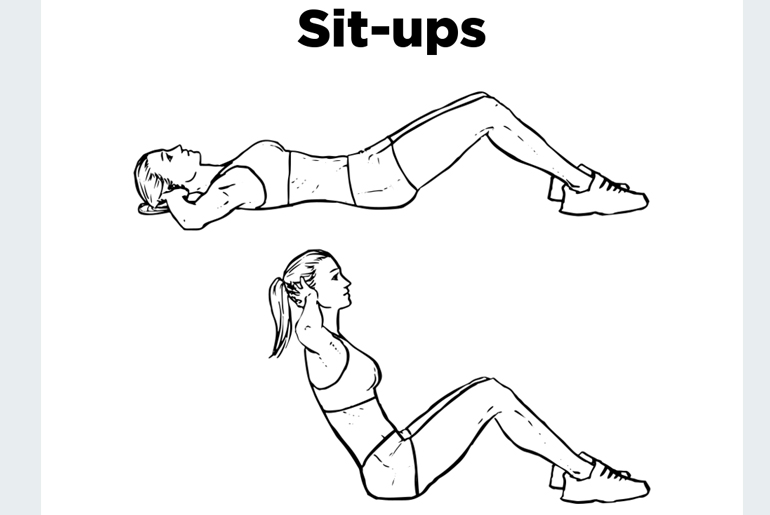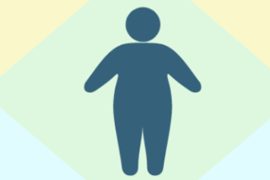Tips for Safe & Effective Sit-Ups:
- Keep your neck relaxed to avoid strain.
- Avoid jerking motions—use controlled movements.
- Engage your core muscles, not your hip flexors.
- Maintain steady breathing—exhale when lifting, inhale when lowering.
For Better Results: Combine sit-ups with full-body exercises like planks, squats, and cardio workouts for overall fat loss and core definition.
What to Do Along with Sit-Ups for Belly Fat Reduction
Sit-ups alone won’t burn belly fat. Instead, a combination of exercise, diet, and lifestyle changes is needed for effective fat loss. Here’s what you should do:
1. Eat a Healthy Diet
- Reduce sugar, junk food, and excess calories to prevent fat accumulation.
- Increase protein and fiber intake—these keep you full longer and support weight loss.
- Include healthy fats (nuts, seeds, avocado) and complex carbs (quinoa, oats, brown rice) for balanced nutrition.
2. Do Cardio Exercises
Cardio workouts help burn calories and reduce overall body fat, including belly fat:
- Running or brisk walking – Burns calories and improves heart health.
- Cycling – Engages core muscles and helps fat loss.
- Swimming – A full-body workout that boosts fat burning.
- Jump rope (skipping) – A high-intensity exercise that torches calories quickly.
3. Strength Training
Lifting weights or bodyweight exercises build muscle, increase metabolism, and help burn fat.
- Squats
- Push-ups
- Deadlifts
- Planks
- Lunges
4. Stay Hydrated
- Drink at least 8 glasses of water daily to boost metabolism and aid digestion.
- Water helps in fat breakdown and removal of toxins from the body.
5. Manage Stress
Chronic stress increases cortisol levels, leading to belly fat storage. Reduce stress by:
- Practicing meditation or deep breathing
- Getting adequate sleep (7-9 hours)
- Engaging in physical activity
Combine sit-ups with a proper diet, cardio, strength training, hydration, and stress management for the best belly fat reduction results.
Who Should Avoid Sit-Ups for Belly Fat Reduction?
While sit-ups can help strengthen the core, they may not be suitable for everyone. Avoid sit-ups if you have:
1. Lower Back Pain: Sit-ups put pressure on the spine, which can worsen lower back pain. Harvard Health Publishing states that they may even contribute to disc issues over time.
2. Neck Pain: If done incorrectly, sit-ups can strain the neck, especially if you pull on your head while lifting your upper body.
3. Pregnancy: Sit-ups are unsafe during pregnancy as they put excess pressure on the abdomen, which may strain abdominal muscles and cause discomfort.
4. Post-Surgery Recovery: If you’ve had abdominal or spinal surgery, avoid sit-ups until cleared by a doctor.
Better Alternatives for Core Strength:
- Planks (safer for the back and neck)
- Dead bugs (gentle on the spine)
- Leg raises (strengthen the lower abs without spinal strain)
Consult a doctor if you have medical conditions before doing sit-ups.
Sit-ups are effective for strengthening the core but do not directly burn belly fat. Fat loss happens when you burn more calories than you consume, which requires a combination of cardio, strength training, and a balanced diet. While sit-ups can help tone the abdominal muscles, they should be paired with overall weight-loss strategies for visible results. Overdoing sit-ups can also strain recovery, so a well-rounded fitness routine is key to achieving a flat stomach.
Disclaimer:
The information contained in this article is for educational and informational purposes only and is not intended as a health advice. We would ask you to consult a qualified professional or medical expert to gain additional knowledge before you choose to consume any product or perform any exercise.








